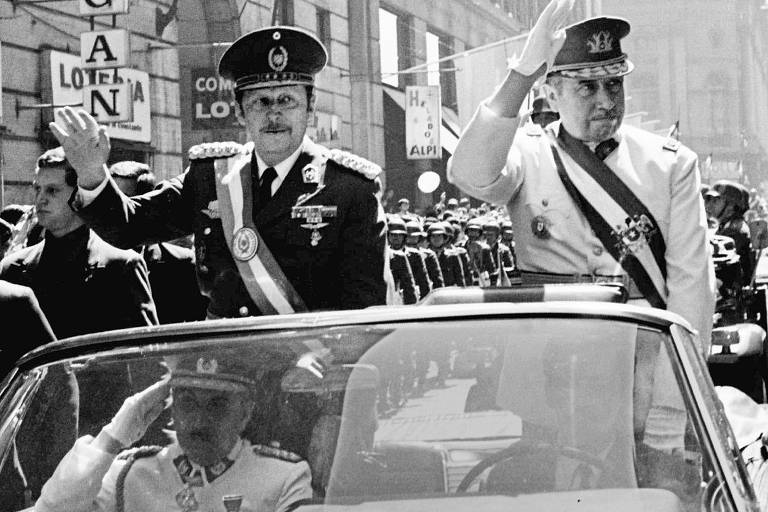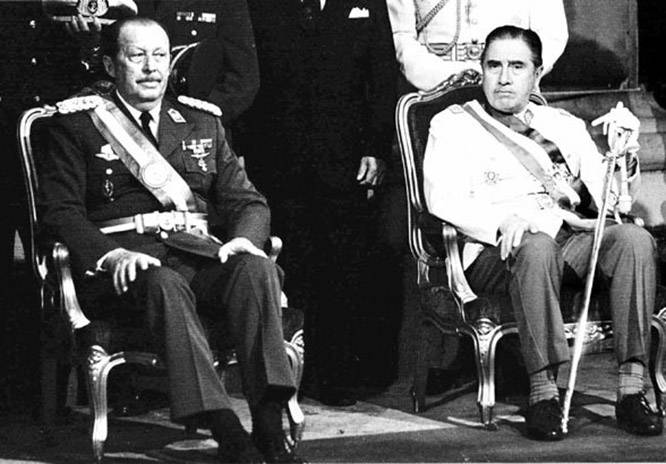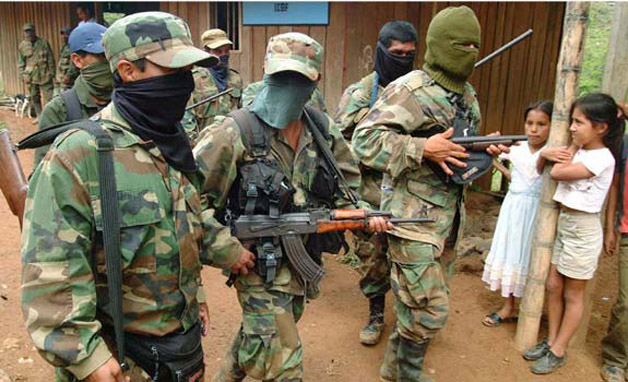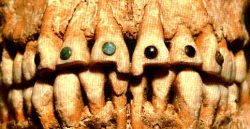Judi Lynn
Judi Lynn's JournalParaguay's Chamber of Deputies Rejects Abdo's Impeachment

People has kept in the streets for more than a week, demanding president Abdo to resign. | Photo: Twitter/ @OsvaldoteleSUR
Published 17 March 2021 (3 hours 12 minutes ago)
"We need 16 more votes," Deputy Celeste Amarilla from the Liberal Party had said early, but the Colorado party of Benitez holds the majority within the legislative body.
Paraguay's Chamber of Deputies rejected an impeachment request submitted by the opposition on Wednesday, as people took to the streets demanding that President Mario Abdo Benitez resigns over accusations of corruption and mismanagement of the COVID-19 pandemic.
The opposition needed 53 votes to move on with the impeachment. "We need 16 more votes," Deputy Celeste Amarilla from the Liberal Party had said early, but the Colorado party of Benitez holds the majority within the legislative body. However, the official noticed that they were not "looking for votes; we are presenting this measure because people took to the streets to ask for it."
Protestors have been demonstrating for more than a week with violent clashes with the police. teleSUR correspondent in Paraguay Osvaldo Zayas reports that farmer's organizations have summoned for rallied in the coming days.
Last year the government requested millionaire loans to tackle the COVID-19 pandemic but the people questions where it was allocated to after a critical shortage of medical supplies and vaccines. Zayas explains that this is the second impeachment threat upon Abdo, whose term must end in 2023.
More:
https://www.telesurenglish.net/news/Paraguays-Chamber-of-Deputies-Rejects-Abdos-Impeachment-20210317-0022.html
~ ~ ~
Info. regarding Abdo, which I had never known until a moment ago:
Paraguay's business-friendly Colorado Party keeps presidency
By Daniela Desantis, Mariel Cristaldo
4 MIN READ
ASUNCION (Reuters) - The candidate from Paraguay’s ruling Colorado Party won Sunday’s presidential election, according to official results with 96 percent of ballots counted, pointing to another five years of pro-business policies in the major soy producer.
. . .
Abdo supports current low-tax policies aimed at stimulating foreign investment and agricultural production in the world’s No. 4 soybean exporter and a major supplier of beef.
. . .
Abdo is the son of the late private secretary of dictator Alfredo Stroessner, who ruled Paraguay with an iron hand for 35 years. Abdo was 16 when Stroessner’s rule ended in 1989.
Earlier on Sunday, Abdo visited the tomb of his father, as he did on the day of the primary election in December when he won the nomination of the Colorado Party.
Abdo’s conservative policies and family history were a concern to some voters who had doubts about his commitment to clean up government.
“This is a country of corruption and until we end that, we will not move forward. Mario Abdo is a son of the dictatorship and I do not think he will govern well,” Edgar Gonzalez, 45, said on his way out of his voting station in a high school in the upper-middle-class neighborhood of Trinidad in Asuncion.
More:
https://www.reuters.com/article/us-paraguay-election/paraguays-business-friendly-colorado-party-keeps-presidency-idUSKBN1HT0A0
~ ~ ~
What a shame the Colorado Party is still in control of Paraguay.
Wikipedia for the Colorado Party:
The National Republican Association – Colorado Party (Spanish: Asociación Nacional Republicana – Partido Colorado, ANR-PC) is a right-wing political party in Paraguay, founded on 11 September 1887, by Bernardino Caballero. The party was defeated in 2008 after 61 years in power, but the party regained the presidency in the 2013. With almost 2 million members, it is the largest political party in the country.
. . .
According to Antonio Soljancic, a social scientist at the Autonomous University of Asunción, "in order to get a job you had to show you were a party member. The problem Paraguay has is that, although Stroessner disappeared from the political map, he left a legacy that no one has tried to bury".[7]
https://en.wikipedia.org/wiki/Colorado_Party_(Paraguay)
~ ~ ~
Wikipedia for Colorado Party's Alfredo Stroessner, monster right-wing dictator for 35 years, totally supported by Washington D.C.:
Alfredo Stroessner Matiauda (Spanish: [alˈfɾeðo estɾozˈneɾ]; 3 November 1912 – 16 August 2006) was a Paraguayan Army officer who was the dictator of Paraguay from 1954 to 1989. He ascended to the position after leading an army coup in 1954. His 35-year-long rule, marked by an uninterrupted period of repression in his country, is the longest in modern South American history.
In 1954, he ousted Federico Chávez, becoming president after winning an election in which he was the sole candidate. As an anti-communist, Stroessner had the backing of the United States for most of his time in power. His supporters packed the legislature and ran the courts, and he ruthlessly suppressed all opposition. He kept his country in what he called a constant "state of siege" that overruled civil liberties, enforced a cult of personality, and tortured and killed political opponents. Membership in his Colorado Party was a prerequisite for job promotion, free medical care and other services. The constitution had to be modified in 1967 and 1977 to legitimize his six consecutive elections to the presidency. Stroessner provided exile for Nazi war criminals (including Josef Mengele) as well as overthrown dictators, such as Nicaragua's Anastasio Somoza Debayle (later assassinated in Paraguay).
. . .
Dictatorship (1954-1989)
Stroessner objected to President Federico Chávez's plans to arm the national police and threw him out of office in a coup on May 4, 1954. After a brief interim presidency by Tomás Romero, Stroessner was the only candidate in a special election on 11 July to complete Chávez's term. He was reelected seven times—in 1958, 1963, 1968, 1973, 1978, 1983 and 1988. He appeared alone on the ballot in 1958. In his other elections, he won by implausibly high margins; only once (1968) did an opposition candidate get more than 20 percent of the vote. He served for 35 years, with only Fidel years (1976–2008).
Soon after taking office, Stroessner declared a state of siege, which allowed him to suspend civil liberties. The state-of-siege provisions allowed the government to arrest and detain anyone indefinitely without trial, as well as forbid public meetings and demonstrations. It was renewed every 90 days until 1987, except for a brief period in 1959. Although it technically only applied to Asunción after 1970, the courts ruled that anyone charged with security offenses could be brought to the capital and charged under the state-of-siege provisions—even if the offense took place outside the capital.[2][3] Apart from one 24-hour period on election days, Stroessner ruled under what amounted to martial law for nearly all of his tenure. A devoted anti-communist who brought Paraguay into the World Anti-Communist League, he justified his repression as a necessary measure to protect the country.
Paraguay enjoyed close military and economic ties with the United States and supported the US invasion of the Dominican Republic.[4] The Stroessner regime even offered to send troops to Vietnam alongside the Americans.[5] The United States played a "critical supporting role" in the domestic affairs of Stoessner's Paraguay.[6] Between 1962 and 1975 the US provided $146 million to Paraguay's military government and Paraguayan officers were trained at the US Army School of the Americas.[7] Although the military and security forces under Stroessner received less material support from the United States than other South American countries, strong inter-military connections existed through military advisors and military training. Between 1962 and 1966, nearly 400 Paraguayan military personnel were trained by the United States in the Panama Canal Zone and on US soil.[8] Strong Paraguayan-U.S. relations continued until the Carter Administration emphasized a foreign policy that recognized human rights abuses, although both military and economic aid were allotted to the Paraguayan government in Carter's budgets.[9] The Reagan Administration restored more cordial relations due to Stroessner's staunch anti-communism, but by the mid 1980s relations cooled, largely because of the international outcry over the regime's excesses, along with its involvement in narcotics trafficking and money-laundering.[10][11][12] In 1986, The Reagan administration added his regime to its list of Latin American dictatorships.[13]
. . .
Operation Condor
. . .
Under Stroessner, egregious human rights violations were committed against the Aché Indian population of Paraguay's eastern districts, largely as the result of U.S. and European corporations wanting access to the country's forests, mines and grazing lands.[31][7] The Aché Indians resided on land that was coveted and had resisted relocation attempts by the Paraguayan army. The government retaliated with massacres and forced many Aché into slavery. In 1974 the UN accused Paraguay of slavery and genocide. Only a few hundred Aché remained alive by the late 1970s.[7] The Stroessner regime financed this genocide with U.S. aid.[7]
More:
https://en.wikipedia.org/wiki/Alfredo_Stroessner
Good allies, Stroessner and Chile's blood-thirsty (US supported) Augusto Pinochet:




The dictators, from left: Jorge Videla of Argentina, Augusto Pinochet of Chile, João Figueiredo of Brazil and Alfredo Stroessner of Paraguay. Composite: AP, Reuters & Rex Features
'Macaco' joins other former warlords to testify before Colombia's Truth Commission
by Adriaan Alsema March 17, 2021
One of Colombia’s most important former paramilitary commanders asked to testify before the Truth Commission over his role in the country’s armed conflict.
. . .
The BCB was one of the AUC’s most powerful paramilitary groups until the demobilization of their more than 7,600 members between 2003 and 2006.
. . .
The BCB’s late political leader, Ivan Roberto Duque, died in 2019, three says after committing to cooperate the Truth Commission about the crimes of the organization he led with Jimenez. Before )his death, Duque estimated that the BCB and other paramilitary groups’ political influence reached so far they had half of Congress in their pocket in 2002.
More:
https://colombiareports.com/macaco-joins-other-former-warlords-who-will-testify-before-colombias-truth-commission/
~ ~ ~

"Macaco"

"Macaco"


"Macaco's" death squad dirtbags going through a village.
Victims want Colombia to strip military war criminals of medals
by Adriaan Alsema March 17, 2021
The families of civilians who were executed by Colombia’s security forces to inflate results want the commanders responsible of these atrocities to be stripped of their medals, they said Tuesday.
The representative of the Association of Mothers of False Positives (Mafapo), Jacqueline Castillo, said that victims of her organization want the security forces to revoke decorations of war criminals as a means of compensation.
Castillo expressed the victims’ wish during the presentation of a report to the war crimes tribunal and the truth commission on the victimization of family members of more than 6,400 civilians who were executed and falsely presented as combat kills.
The victims’ representative said some women sold their homes in order to have the funds that would allow them to find their missing sons.
More:
https://colombiareports.com/victims-want-colombia-to-strip-military-war-criminals-of-medals/
An ancient Maya ambassador's bones show a life of privilege and hardship
15-MAR-2021
Ajpach' Waal forged an alliance between two dynasties but died in obscurity
UNIVERSITY OF CALIFORNIA - RIVERSIDE

IMAGE: TEETH WITH DENTAL INLAYS FROM A NONROYAL ELITE MAYAN TOMB.
CREDIT: KENICHIRO TSUKAMOTO
An important Maya man buried nearly 1,300 years ago led a privileged yet difficult life. The man, a diplomat named Ajpach' Waal, suffered malnutrition or illness as a child, but as an adult he helped negotiate an alliance between two powerful dynasties that ultimately failed. The ensuing political instability left him in reduced economic circumstances, and he probably died in relative obscurity.
During excavations at El Palmar, a small plaza compound in Mexico near the borders of Belize and Guatemala, archaeologists led by Kenichiro Tsukamoto, an assistant professor of anthropology at UC Riverside, discovered a hieroglyph-adorned stairway leading up to a ceremonial platform. When deciphered, the hieroglyphs revealed that in June, 726 CE, Ajpach' Waal traveled and met the king of Copán, 350 miles away in Honduras, to forge an alliance with the king of Calakmul, near El Palmar.
The findings, published in the journal Latin American Antiquity, shed light on the role communities peripheral to major centers played in cementing connections between royal families during the Late Classic period (600-800 CE), and the ways they might suffer when something shattered those alliances.
The inscriptions identified Ajpach' Waal as a "lakam," or standard-bearer, an ambassador that carried a banner as they walked on diplomatic missions between cities. He inherited this lofty position through his father's lineage, and his mother also came from an elite family. Ajpach' Waal must have considered this his crowning achievement because the hieroglyphs indicate he was not given the platform by El Palmar's ruler, but had it built it for himself a few months after the mission in September, 726 CE. The platform served as a sort of theatrical stage where spectacular rituals were performed for an audience, with only influential people able to build their own.
More:
https://www.eurekalert.org/pub_releases/2021-03/uoc--aam031521.php
~ ~ ~ ~ ~
Looked for a photo of jewel-inlaid Mayan teeth:

Dental Modifications of Ancient Maya and Other Civilizations (Part Two)
Posted on August 6, 2013 by Dr. Gray
The jewel inlays, mentioned in Part 1 of this series, are the type of dental modification that most closely resembles today’s fads. Similar to “grills” or other forms of “tooth jewelry,” the inlays of the Ancient Maya required exquisite skill and craftsmanship. This technique is thought to have begun in the Pre-Classic (100 BC-300 AD). However, the more elegant tooth alterations occurred much more recently, sometime between 700 and 900 AD. The stones commonly used to highlight the teeth of these Mayan men, women, and children included pyrite, jadeite, turquois, hematite, quartz, serpentine, and cinnabar.
Joel B. Schilling, DDS, says that the Ancient Maya used powdered quartz in water as an abrasive while drilling holes for these inlays. They spun a round, hard tube between the hands or in a rope drill to cut a round indention into the tooth enamel. It’s also been suggested that a thin, sharpened animal bone that had been hardened by fire was used. Either way, after the hole was made the inlay was cemented into place.
“Head Shaping and Dental Decoration Among the Ancient Maya: Archeological and Cultural Aspects,” by Vera Tiesler, states that dental modification was slightly more common among females, with about 65 percent of females having modified teeth compared to roughly 58 percent of males. Also, based on archaeological findings it appears that roughly 60 percent of them engaged in some form of dental modification, and more than fifty different patterns have been identified within Ancient Maya culture.
In fact, there is an outstanding collection of over 1,200 teeth adorned at the Instituto Nacional de Anthropologia e Historia in Mexico City. Romero Molina, of the INAH, so far has found 62 different patterns of teeth and organized these patterns into 7 different categories. Most of these teeth have come from Middle America, with only 3 coming from South America and 3 coming from North America. In addition to the different patterns of individual teeth, Molina also discovered that the teeth would sometimes be combined to form specific patterns in the jaw to add to the overall visual effect.
More:
https://santarosadentist.wordpress.com/2013/08/06/dental-modifications-of-ancient-maya-and-other-civilizations-part-two/
Testimony: how group on US terror list helped Uribe win Colombia's 2002 elections

by Adriaan Alsema March 5, 2021
Colombia’s former President Alvaro Uribe became president in 2002 with the help of a paramilitary group the US government had designated a foreign terrorist organization, according to a former member.
A Medellin Court ordered to investigate the Bloque Metro’s use of terrorism to help Uribe become president in 2011 already, but has been stonewalled by the prosecution for a decade.
In fact, the prosecution denied the group allegedly founded by Uribe in 1996 even existed for years, according to the court.
In a testimony that came to light last year, a former member of Bloque Metro told a prosecutor in detail how the paramilitary group terrorized people into voting for Uribe in the presidential election organized and monitored by the father of President Ivan Duque.
More:
https://colombiareports.com/testimony-how-group-on-us-terror-list-helped-uribe-win-colombias-2002-elections/
~ ~ ~
Related article posted at DU years ago:
COLOMBIA: "Mark Him on the Ballot – The One Wearing Glasses"
By Constanza Vieira
Constanza Vieira
BOGOTA, May 8 2008 (IPS) - "With Uribe, we thought: this is the guy who is going to change the country," the 41-year-old fisherwoman told IPS.
That is why her fishing and farming village of 800 people in the central Colombian region of Magdalena Medio decided overwhelmingly to vote for current President Álvaro Uribe in the 2002 presidential elections, when he first ran.
The woman agreed to talk to IPS on the condition that she be asked neither her name (we will call her "L."
. . .
When the rightwing president’s first four-year term came to an end in 2006, most of the villagers decided again to vote for him, reasoning that he just needed more time to reduce poverty.
The odd thing was that in both the 2002 and 2006 elections, despite the fact that the villagers had already decided to vote for Uribe, the far-right paramilitaries, who had committed a number of murders since 1998, when they appeared in the region that was previously dominated by the leftwing guerrillas, pressured the local residents to vote for Uribe anyway.
The paramilitaries did not kill people to pressure the rest to vote for Uribe, as they did in other communities, but merely used "threats," said L.
"If you don't vote for Uribe, you know what the consequences will be," the villagers were told ominously.
And on election day, they breathed down voters’ necks: "This is the candidate you’re going to vote for. You’re going to put your mark by this one. The one wearing glasses," they would say, pointing to Uribe’s photo on the ballot, L. recalled.
"One (of the paramilitaries) was on the precinct board, another one was standing next to the table, and another was a little way off, all of them watching to see if you voted for Uribe," she added, referring to the less than subtle way that the death squads commanded by drug traffickers and allies of the army ensured that L.’s village voted en masse for the current president in both elections.
. . .
"‘Parapolitics’ is the seizure of power in Colombia by a convergence of alliances and interests of the regional and national political elites, drug traffickers, and armed force," Claudia López, one of the authors of a report titled "Parapolitics: The Route of Paramilitary Expansion and Political Accords", told a packed auditorium at the Bogotá International Book Fair.
She was announcing the release of the third edition of the report, produced by the Bogotá think tank Corporación Nuevo Arco Iris.
The death squads have warned that orders have been issued to kill several of the report’s authors.
López’s monitoring of local and regional election outcomes in Colombia from 1994 to the present points to suspiciously abrupt shifts in voting patterns in entire regions after the paramilitaries gained control in those areas.
More:
http://www.ipsnews.net/2008/05/colombia-quotmark-him-on-the-ballot-the-one-wearing-glassesquot/
Profile Information
Member since: 2002Number of posts: 160,527